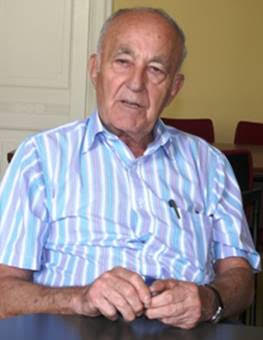
THE VOICE OF INTERNATIONAL LITHUANIA
|
VilNews has its own Google archive! Type a word in the above search box to find any article.
You can also follow us on Facebook. We have two different pages. Click to open and join.
|
Front page
- Posted by - (0) Comment
 |
 ONE YEAR ONLINE! |
VilNews Honorary Council!
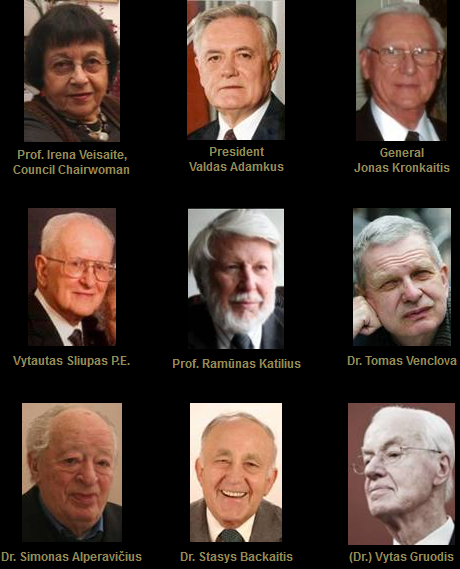
By: Aage Myhre, Editor-in-Chief
aage.myhre@VilNews.com
Dear VilNews readers,
We are today proud to present you to our ‘Honorary Council’ – composed of distinguished individuals, all born in Lithuania before World War II, all having extraordinary lives and careers – some in Lithuania, some in exile due to the Soviet occupation of their motherland.
The members of the Honorary Council, wish to contribute, embody, and set standards that enhance the progress and development of Lithuania as a great nation based on dignity, wisdom, tolerance, multiculturalism, and respect for each other.
Lithuania is today a free and independent nation with norms, values, and visions that are deeply rooted in our country’s long and proud history, and it is these outstanding qualities that define the country and our people as the nation called Lithuania. These are the traits that have made Lithuania a great, progressive, and prosperous force in human history.
Now our nation needs to pull together so that we can confront boldly the challenges we face and take responsibility for our own future again.
The dignitaries participation in the Honorary Council does not imply that they, either as a group or as individuals, necessarily agree with all of the opinions the publication’s editorial staff, readers, and other parties may express in articles, comments, or other published content, but they do affirm and advocate freedom of the press, speech, and other forms of legitimate expression as among the inviolable rights of a democratic Lithuania, based on the ethical standards outlined in the publication’s own “Code of Ethics” (ref VilNews Section 3).
They encourage Lithuanians and readers around the world to express their opinions and views through VilNews with the common goal of contributing to a better and more prosperous future for the worldwide Lithuanian community and the nation called “Lithuania!”
Irena Veisaite – Valdas Adamkus – Jonas Kronkaitis – Stasys Backaitis
Vytautas Slliupas – Tomas Venclova – Romas Katilius – Siminoas Alperavicius – Vytas Gruodis
TO READ MORE, GO TO OUR SECTION 2
* * *
VilNews became an online e-publication
15th of February 2011
* * *
Today: 250.000 readers in 175 countries
in absolutely all world corners!
* * *
If VilNews was printed on paper, it would become
a book of more than 6.000 pages
* * *

Coronation of King Mindaugas, Lithuania’s first and only king, 6 July 1253.
“The Coronation of King Mindaugas” is the only historical picture out of half a
thousand works that were painted by Adomas Varnas (1879-1979). Varnas was
Lithuanian, a graduate of the Krakow Academy of Fine Arts and the Geneva
High School of Painting, and lived abroad most of his life. He worked on
the painting of King Mindaugas in Chicago, USA. The size of the picture is
1,65 m x 1,3 m. It portrays the climactic scene of the King’s coronation.
Varnas painted the canvas when he was over 70 years of age, in 1952.
He consulted several scientists to avoid historical mistakes.
VilNews went online 15 February 2011. Our goal was to get 100,000 visitors in one year. This target was reached already after six months, and now, after one year, we are very pleased to announce that we have reached 250,000 visitors – one quart million readers in no less than 175 countries! Around 1,000 persons are now reading VilNews every single day, a new reader every 1,5 minute in other words…
Experts told us in advance that a ‘niche product’ like this could expect a readership of 10,000 – 15,000 per year. Skeptics said that we were too optimistic. They were thoroughly wrong …
VilNews is a unique combination of blogs, news, historical articles, etc – a news media and social media under same umbrella, including a huge information base providing background articles on history, politics, economy and much more.
As far as we know VilNews is now the world’s most comprehensive online presentation of Lithuania and Lithuanian topics, be it with regard to history, politics, economy, culture, tourism and more. Had VilNews been printed on paper it would be a book of more than 6,000 pages, thicker than the Bible, Old and New Testament together.
To make reading easier, we have divided VilNews into 24 specialty sections. Below we have described them all. To get to the sections you can now today simply press the LEARN MORE buttons to the right, but normally you have to use the buttons on top of the front page of VilNews.
Note also the search box at the top of the front page. Enter any keyword and click SEARCH to find articles from our very extensive archive.
- Bookmark :
- Digg
- del.icio.us
- Stumbleupon
- Redit it
- Posted by - (0) Comment
February 16, 1918
Act of independence

Facsimile of the Act of February 16
Dear readers,
Two of the most significant dates for Lithuania in the 20th Century were February 16, 1918 when Lithuania declared its independence from Imperial Russia by signing the Act of Independence of Lithuania and March 11, 1990 when the Act of the Re-Establishment of the State of Lithuania was signed which re-established the country’s freedom from Soviet Russia. We would like to share with you some of the situations that existed at this time and events that took place leading up to February 16, 1918 and the aftermath of this historical event.
Su pagarbe
Vincas Karnila
Associate editor
To read the article, go to our SECTION 10
See also picture at top of SECTION 9
- Bookmark :
- Digg
- del.icio.us
- Stumbleupon
- Redit it
- Posted by - (0) Comment
“DOUBLE GENOCIDE”
 Roger Cohen |
 |
 |
‘The Suffering Olympics’
By ROGER COHEN
Published: January 30, 2012
VILNIUS, LITHUANIA — The “double genocide” wars that pit Stalin’s crimes against Hitler’s are raging in wide swathes of Europe and every now and again along comes a gust from the past to stoke them. The 70th anniversary this month of the Nazi adoption at Wannsee of annihilation plans for the Jews provided one such squall.
Yes, the past is still treacherous beneath Europe’s calm surface. Memory swirls untamed in the parts of the Continent that the American historian Timothy Snyder calls “Bloodlands,” the slaughterhouses from Lithuania to Ukraine that Hitler and Stalin subjected to their murderous whim.
To mark the Wannsee anniversary, over 70 European Parliament members, including 8 Lithuanians, signed a declaration objecting to “attempts to obfuscate the Holocaust by diminishing its uniqueness and deeming it to be equal, similar or equivalent to Communism.” It also rejected efforts to rewrite European school history books “to reflect the notion of ‘double genocide.”’
All of this was too much for the Lithuanian foreign minister, Audronius Azubalis, a conservative, who blasted the Lithuanian social democrat signatories as “pathetic.” His spokeswoman declared that the only difference between Hitler and Stalin was the length of their mustaches. She said legal qualifications of the crimes they committed were “absolutely the same”: genocide, war crimes and crimes against humanity.
- Bookmark :
- Digg
- del.icio.us
- Stumbleupon
- Redit it
- Posted by - (0) Comment
“DOUBLE GENOCIDE”
Three major flaws mar
Mr. Cohen’s attempt

Boris Bakunas
By: Dr. Boris Vytautas Bakunas, Ph.D.
"Mr. Cohen may appear to make a sincere effort to present a balanced view in his article; however, three major flaws mar his attempt. First, the article is based on the logical fallacy of false dichotomy, also known as the either-or fallacy. Second, the scales of balance in Mr. Cohen’s presentation waver as a result of his failure to present all the relevant facts related to the establishment of The Museum of Genocide Victims in Vilnius. Finally, Mr. Cohen obfuscates two crucial terms: Holocaust and genocide.
- Bookmark :
- Digg
- del.icio.us
- Stumbleupon
- Redit it
- Posted by - (0) Comment
The Polish-Lithuanian
War 1919-1920
A series of articles in 4 parts
By Vincas Karnila, Associate editor
vin.karnila@VilNews.com

South-eastern Lithuania, Vilnius included, was occupied by Poland during the interwar period. Picture: Celebration of the incorporation of Vilnius Region to Poland, 1922.
The Polish–Lithuanian War was an armed conflict between Lithuania and Poland in the aftermath of World War I and Lithuania's declaration of independence 16 February 1918.
The conflict primarily concerned territorial control of the Vilnius Region, including Vilnius, and the Suwałki Region, including the towns of Suwałki, Augustów, and Sejny. According to Lithuanian historians, the war was part of the Lithuanian Wars of Independence and spanned from spring 1919 to November 1920. According to Poland, the war included only fighting over the Suwałki Region in September–October 1920 and was part of the Polish–Soviet War.
After Vilnius was occupied by the Russian Bolsheviks in 1919, the government of the Republic of Lithuania established its main base in Kaunas. When Vilnius was forcibly annexed by Poland, Kaunas became the temporary capital of Lithuania, a position it held until 28 October 1939, when the Red Army handed Vilnius back to Lithuania. The Constituent Assembly of Lithuania first met in Kaunas on 15 May 1920. There were no diplomatic relations between Poland and Lithuania until 1938.
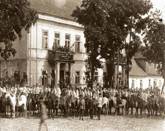 |
Part 1: |
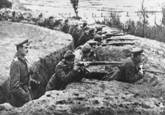 |
Part 2: |
 |
Part 3: |
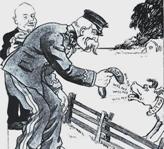 |
Part 4: |
- Bookmark :
- Digg
- del.icio.us
- Stumbleupon
- Redit it
- Posted by - (0) Comment
The Polish-Lithuanian
War 1919-1920
Part 4 of 4 - The AFTERMATH
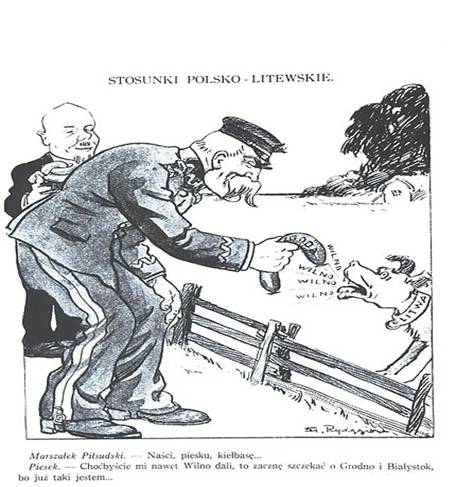
A satirical picture from interwar Polish press (around 1925-1935): a caricature of Marshal Józef Piłsudski and Lithuania, criticizing Lithuanian unwillingness to compromise over Vilnius region. Marshal Piłsudski offers the meat labeled "agreement" to the dog (with the collar labelled Lithuania); the dog barking
"Wilno, wilno, wilno" replies: "Even if you were to give me Wilno, I would
bark for Grodno and Białystok, because this is who I am."
Su pagarbe Vincas Karnila, Associate editor
vin.karnila@VilNews.com
In March 1921, the plans for a referendum vote were abandoned. Neither Lithuania, which was afraid of a negative result, nor Poland, which saw no reason to change status quo, wanted it. The parties could not agree in which territory to carry out the vote and how Żeligowski's forces should be replaced by the League's forces. The League of Nations then moved on from trying to solve the narrow territorial dispute in the Vilnius Region to shaping the fundamental relationship between Poland and Lithuania. During 1921, Belgian Paul Hymans suggested several Polish–Lithuanian federation models but all were rejected by both sides.
READ TODAY’S ARTICLE – PART 4 OF 4
To read previous articles – GO TO OUR SECTION 10
- Bookmark :
- Digg
- del.icio.us
- Stumbleupon
- Redit it
- Posted by - (0) Comment
“Independent Lithuania cannot exist by itself”
(public opinion of the Vatican’s representative in 1921)
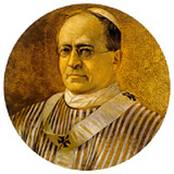
POPE PIUS XI
In April, 1918 Pope Bededict XV appointed Archbishop Achilles Ratti (later Pope Pius XI) as apostolic visitator to Poland and “ex Russian countries”, including Lithuania.
In 1921 apostolic visitator and delegate Rev. Antonio Zechini arrived in Kaunas.
He publicly expressed the opinion that independent Lithuania could not exist by
itself. Lithuania broke off diplomatic relations with the Holy See after the
Concordat of 1925 established an ecclesiastical province in Wilno
thereby acknowledging Poland's claims to the city.
In April, 1918 Pope Bededict XV appointed Archbishop Achilles Ratti (later Pope Pius XI) as apostolic visitator to Poland and “ex Russian countries”, including Lithuania. Lithuanian – Polish relations became especially tense because of incorporation of Vilnius region into Poland. In 1921 apostolic visitator and delegate Rev. Antonio Zechini arrived in Kaunas. He publicly expressed the opinion that independent Lithuania could not exist by itself. Msgr. Zechini counseled Lithuanians to unite with Poles as they had done previously. On November 10, 1922 Vatican recognized independent Lithuania de jure. After the death of Pope Benedict XV Msgr. Antonio Zechini became Archbishop and apostolic delegate for the three Baltic nations. He did not favor the idea of a separate Lithuanian ecclesiastical province. On February 10, 1925 the Concordat was concluded between the Holy See and Poland. The Vilnius (Wilna) question was of the utmost importance to Lithuanians. The Polish Concordat did not undertake to decide the issue of territorial boundaries between Poland and Lithuania, but merely recognized a political de facto situation. Vilnius (Wilna), the ancient Lithuanian capital, was raised to the rank of archdiocese and made one of the five Polish ecclesiastical provinces. Polish Concordat caused great dissatisfaction among Lithuanian population. The situation became so acute that Archbishop Zechini departed for Riga without obtaining permission to return. The tempest was heightened by the news that Lithuanian bishop of Vilnius Jurgis Matulaitis (beatified 1987 by Pope John Paul II; Polish transcription: Jerzy Matulewicz) was forced to leave his See and departed for Rome.
- Bookmark :
- Digg
- del.icio.us
- Stumbleupon
- Redit it
- Posted by - (0) Comment
The Polish-Lithuanian
War 1919-1920
Part 3 of 4 - STRUGGLES for the VILNIUS REGION

Map of the (Polish) Republic of Central Lithuania (in green).
By Vincas Karnila, Associate editor
vin.karnila@VilNews.com
ZELIGOWSKI’S MUTINY
Polish chief of state Jozef Pilsudski ordered his subordinate, General Lucjan Zeligowski, to stage a mutiny with his 1st Lithuanian–Belarusian Division (16 battalions with 14,000 soldiers) in Lida and capture Vilnius in fait accompli.
The rebellion had two main goals, capture Vilnius and preserve Polish international reputation. The League of Nations was mediating other Polish disputes, notably over the Free City of Danzig and Upper Silesia, and direct aggression against Lithuania could have hampered Polish bargaining positions. While the Polish side officially stated Żeligowski to be a deserter and did not support him, Poland provided logistic support, including munitions and food rations, to his units. Żeligowski also received reinforcements when, according to the official version, the mutiny spread further among the Polish troops. His initial attack was secured on both sides by two Polish Armies.
The Żeligowski's Mutiny, in planning since mid-September, began in the early morning on October 8, 1920, just few hours after the signing of the Suwałki Agreement. A provisional agreement was made in the Polish–Soviet War, which freed up Polish units for the attack on Lithuania. As part of the rouse, Żeligowski wrote a note to Polish command announcing his mutiny and expressing his disappointment with the Suwałki Agreement. He claimed that his troops marched to defend the right of self-determination of the local Polish population.
READ TODAY’S ARTICLE – PART 3 OF 4
To read previous articles – GO TO OUR SECTION 10
- Bookmark :
- Digg
- del.icio.us
- Stumbleupon
- Redit it
- Posted by - (0) Comment
The Polish-Lithuanian
War 1919-1920
Part 2 of 4 - ADVANCES and RETREATS
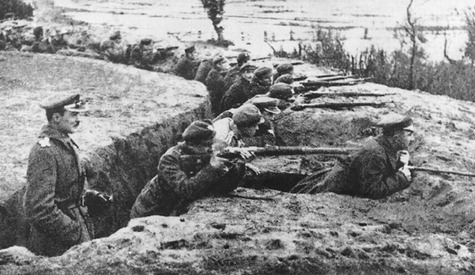
The Battle of the Niemen River was the second-greatest battle of the Polish-Soviet War. It took place near the Neman River between the cities of Suwałki, Grodno and Białystok in today’s Poland and Belarus.
Su pagarbe Vincas Karnila, Associate editor
vin.karnila@VilNews.com
DIPLOMATIC DEVELOPMENTS
In April 1920 Poland launched the large-scale Kiev Offensive in hopes to capture Ukraine. Initially successful, the Polish Army started retreating after Russian counterattacks in early June 1920. Soon the Soviet forces began to threaten Poland's independence as they reached and crossed the Polish borders. On July 9, Polish Prime Minister Wladyslaw Grabski asked the Allied Powers in the Spa Conference (The Spa Conference was a meeting between the Supreme War Council and Weimar Republic in Spa, Belgium on 5–16 July 1920).
READ TODAY’S ARTICLE – PART 2 OF 4
To read previous articles – GO TO OUR SECTION 10
- Bookmark :
- Digg
- del.icio.us
- Stumbleupon
- Redit it
- Posted by - (0) Comment
The Polish-Lithuanian
War 1919-1920
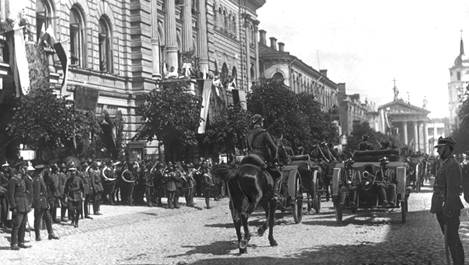
South-eastern Lithuania, Vilnius included, was occupied by Poland
during the interwar period. Picture: Celebration of the incorporation
of Vilnius Region to Poland, 1922.
The Polish–Lithuanian War was an armed conflict between Lithuania and Poland in the aftermath of World War I and Lithuania's declaration of independence 16 February 1918.
VilNews' Associate Editor Vincas Karnila today introduces our readers to a series with a total of four articles about this war and the consequences it had for the relationship between the once good neighbours Poland and Lithuania.
The conflict primarily concerned territorial control of the Vilnius Region, including Vilnius, and the Suwałki Region, including the towns of Suwałki, Augustów, and Sejny. According to Lithuanian historians, the war was part of the Lithuanian Wars of Independence and spanned from spring 1919 to November 1920. According to Poland, the war included only fighting over the Suwałki Region in September–October 1920 and was part of the Polish–Soviet War.
After Vilnius was occupied by the Russian Bolsheviks in 1919, the government of the Republic of Lithuania established its main base in Kaunas. When Vilnius was forcibly annexed by Poland, Kaunas became the temporary capital of Lithuania, a position it held until 28 October 1939, when the Red Army handed Vilnius back to Lithuania. The Constituent Assembly of Lithuania first met in Kaunas on 15 May 1920. There were no diplomatic relations between Poland and Lithuania until 1938.
Introduction
As usually happens, the end of one hostility often results in the beginning of other hostilities. This was the case between Lithuania and Poland after the end of the First World War. With both countries in a state of war with Bolshevik Russia, defending themselves against Russia’s attempt to recapture and occupy the two countries that had just recently regained their independence, this helped to set the stage for armed conflict between the two neighbors. This combined with one country’s plan to control part of Europe, claims to land based on its population and the continued “carving up” of smaller countries by larger countries all helped to create what was known as the Polish – Lithuanian War which resulted in Lithuania losing its capital of Vilnius and other parts of its country to Polish occupation during the interim war period.
Dear readers we would like to invite you review this series which will offer insight as to what led to the conflict, the reasons and justifications, the participants, the areas of action and some of the key events. As always we warmly welcome any additional information and any comments you would like to share.
Su pagarbe Vincas Karnila, Associate editor
vin.karnila@VilNews.com
- Bookmark :
- Digg
- del.icio.us
- Stumbleupon
- Redit it
- Posted by - (0) Comment
The pride of
being Lithuanian

Illustration from: http://www.cafepress.com
Text: Aage Myhre
aage.myhre@VilNews.com
I've been asked why VilNews puts relatively much emphasis on articles with historical content. I've also been asked whether our journey around Europe in January should be presented in a publication that otherwise focuses on Lithuania.
My response is as follows:
Sooner or later the history knocks
at the door of the present
Lithuania’s Foreign Minister Audronius Ažubalis recently said this about the still latent conflict between Armenia and Turkey on the mass killing that took place during the First World War. He is of course right, and the statement is valid for us all, also Lithuania.
The Lithuanian people have for 200 years largely been deprived of the opportunity to know their own nation's history presented in an objective and outspoken way. Those who published historical documentation here were often people who deliberately swept some parts of Lithuania's history under the carpet, exaggerated on other aspects and deliberately misinformed the people. During the years when Lithuania was under Tsarist Russia, Nazi Germany and the Soviet Union, truth and authentic information was often forbidden or falsified. Today it is no longer so, but I still feel that the knowledge about own history among the people here is not very deep or comprehensive in many cases.
Lithuania is a country that more than many others should be seen and understood in the light of historical perspectives...
- Bookmark :
- Digg
- del.icio.us
- Stumbleupon
- Redit it
- Posted by - (0) Comment
RE: Our January Europe tour has come to its end.
Right in time, my friend; just as Davos 2012 ends!

Pls forgive some sarcasm but very unlikely EU countries, like the Soviet communist exploited and impoverished Lithuania, have long showed the way to Europe by adopting serious austerity policies that go almost to the point of "eating the dog food", to use a hyperbole. Unfortunately, this good model that Davos 2012 has been looking so desperately for (and could not find) is drowned in the cacophony of bureaucratic screams around bailing out Greece and other profligate countries that are, so far at least, the true winners in Europe! The whole Europe will soon "go to the dogs"; so your Journey was not a month too soon, Aage.
My advice now: invest in the European dog food :)
Valdas Samonis,
Toronto.
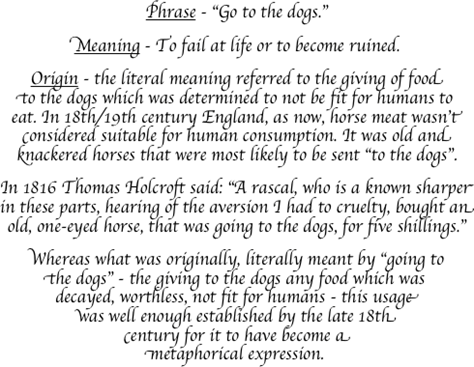
- Bookmark :
- Digg
- del.icio.us
- Stumbleupon
- Redit it
- Posted by - (0) Comment
EUROPE – MY HOME & MY CASTLE (10 of 10)
 |
Turkey, where Europe meets Asia |
|
Today we publish the last travel report
Tour guide, writer and photographer: Aage Myhre To read today’s travel report, click HERE To read the previous articles, go to our SECTION 11 |
- Bookmark :
- Digg
- del.icio.us
- Stumbleupon
- Redit it
- Posted by - (0) Comment

EUROPE – MY HOME & MY CASTLE (9 of 10)
Hanseatic Baltic
|
VilNews is on its way around Europe!
Tour guide: Aage Myhre To read today’s travel report, click HERE To read the previous articles, go to our SECTION 11 |
- Bookmark :
- Digg
- del.icio.us
- Stumbleupon
- Redit it
- Posted by - (0) Comment
![]()
EUROPE – MY HOME & MY CASTLE (8 of 10)
From east to west
in European Russia
|
VilNews is on its way around Europe!
Tour guide: Aage Myhre To read today’s travel report, click HERE To read the previous articles, go to our SECTION 11 |
- Bookmark :
- Digg
- del.icio.us
- Stumbleupon
- Redit it
- Posted by - (0) Comment




EUROPE – MY HOME & MY CASTLE (7 of 10)
From Warsaw to Budapest
|
VilNews is on its way around Europe!
Tour guide: Aage Myhre To read today’s travel report, click HERE To read the previous articles, go to our SECTION 11 |
- Bookmark :
- Digg
- del.icio.us
- Stumbleupon
- Redit it
VilNews e-magazine is published in Vilnius, Lithuania. Editor-in-Chief: Mr. Aage Myhre. Inquires to the editors: editor@VilNews.com.
Code of Ethics: See Section 2 – about VilNews. VilNews is not responsible for content on external links/web pages.
HOW TO ADVERTISE IN VILNEWS.
All content is copyrighted © 2011. UAB ‘VilNews’.

 Click on the buttons to open and read each of VilNews' 18 sub-sections
Click on the buttons to open and read each of VilNews' 18 sub-sections 







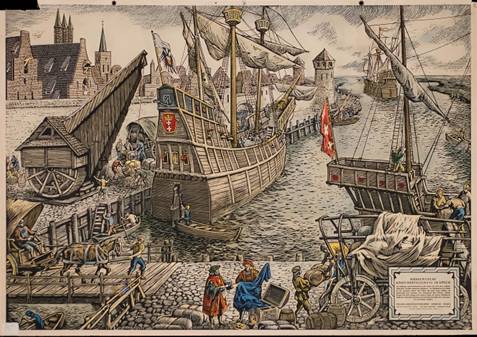
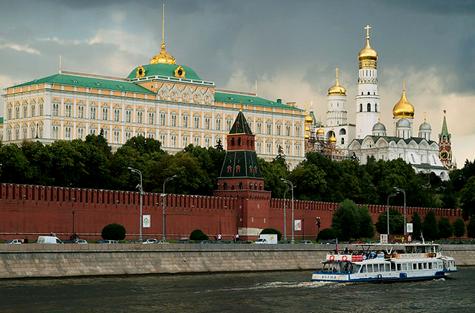
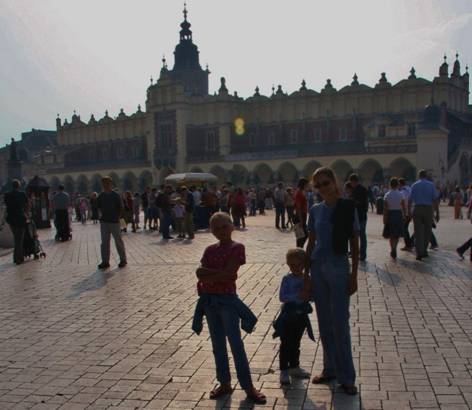
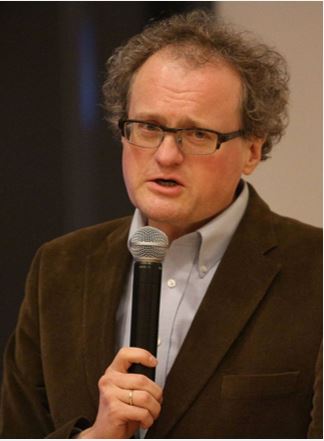

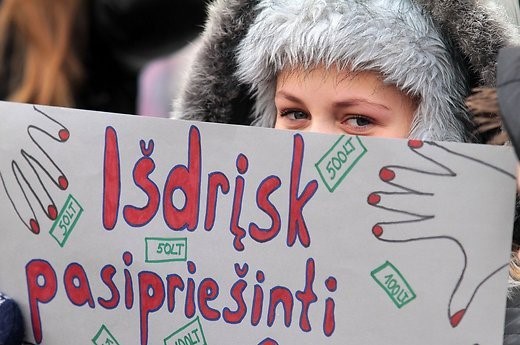


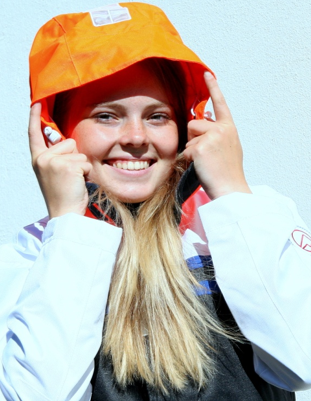


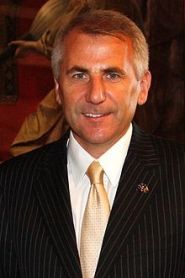
.jpg)
